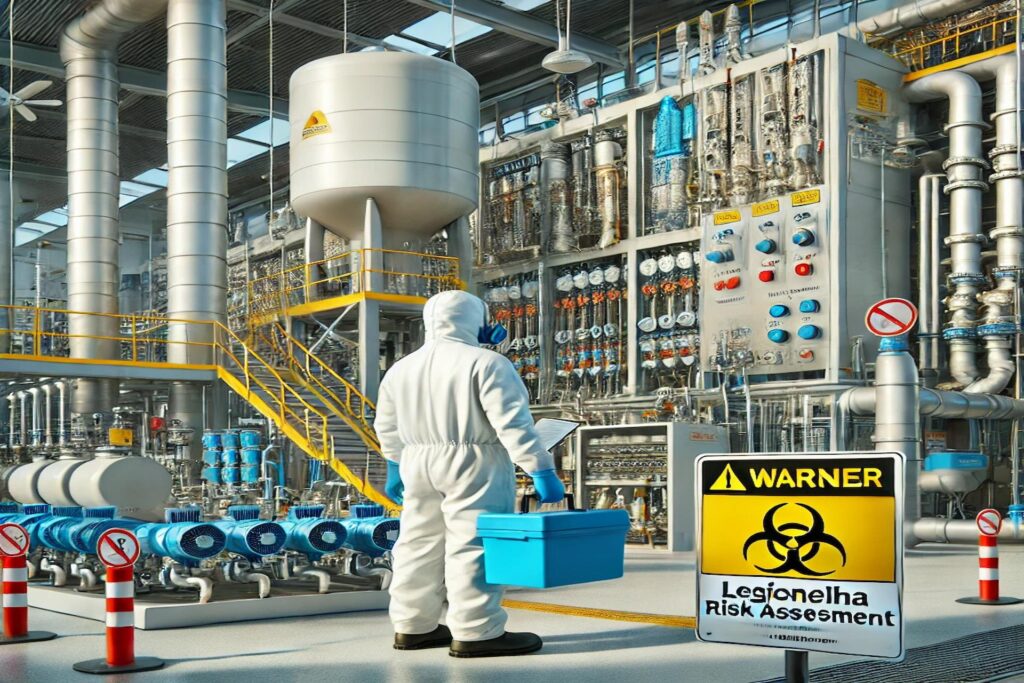Legionella bacteria can pose a serious health risk which shouldn’t be ignored, especially in residential properties. For landlords, understanding and managing this risk that legionella poses is not just a matter of tenant safety, but also a legal obligation that demands attention and action.
This guide aims to help landlords by shedding some light on the crucial aspects of legionella, what it is, health implications, legal responsibilities and how an effective legionella risk assessment can help protect their tenants and ensure their properties comply with regulations.
-
What is Legionella and Why is it a Concern?
Legionella bacteria are naturally occurring microorganisms found in water sources such as ponds and rivers, but they can also infiltrate man-made water systems, where they pose a significant health risk. Under certain conditions, where nutrients are present, and the temperatures are between 20 °C and 45°C, these microscopic organisms can thrive, multiplying rapidly and contaminating the water.
The primary concern with legionella reaching dangerous levels is the potential for the bacteria to cause Legionnaires’ disease, a severe form of pneumonia that can be life-threatening. Legionnaires’ disease is contracted by inhaling water droplets containing Legionella bacteria, which can happen through various means, including hot and cold water outlets, showers, and air conditioning systems.
While anyone can develop this illness, certain groups are at higher risk, including the elderly, smokers, and individuals with compromised immune systems or chronic health conditions.
Although private homes generally pose a low risk, certain scenarios and types of properties are more likely to harbour bacterial growth. Landlords must understand the importance of Legionella risk assessments and the maintenance and management of water systems to reduce risk and protect tenants’ health.
-
Legal Responsibilities for Landlords
Landlords have a legal duty to ensure the health and safety of their tenants by keeping properties free from health hazards and this responsibility extends to the control of Legionella bacteria. Under the Health and Safety at Work Act 1974, landlords are considered self-employed and must conduct their business to protect tenants from health risks.
The Control of Substances Hazardous to Health Regulations 2002 (COSHH) provides a framework for controlling risks from hazardous substances, including Legionella. Landlords must identify, assess, and implement necessary measures to control these risks.
Since 2001, the L8 Approved Code of Practice has required landlords to assess the risks of Legionella exposure to their tenants. This applies to any premises where water is used or stored, and there is a reasonable, foreseeable risk of exposure to Legionella bacteria.
-
Conducting a Legionella Risk Assessment
Landlords have a duty to assess the potential risk of Legionella bacteria in their rental properties. A Legionella risk assessment involves identifying hazards, determining risk levels, and implementing control measures.
For smaller properties or those with simple water systems, it is possible for landlords who possess the necessary skills to conduct the assessment themselves. However, when it comes to health and safety you can never be too careful and it is always beneficial to hire a professional, especially for larger or complex sites.
The legionella risk assessment should cover all water systems and be reviewed at least every two years or when changes occur. While not legally required, water testing may be part of a professional assessment to ensure tenant safety.
-
Implementing Control Measures
To control Legionella risks, landlords should focus on water temperature management and implementing processes, procedures and strategies that will ensure their water systems remain safe. Here are some examples;
- Hot water should be stored at 60°C or higher and distributed at 50°C or above.
- Cold water should be kept below 20°C
- Regular system checks, inspections, and cleaning are essential
- Landlords should identify ‘sentinel’ outlets for monthly temperature checks
- Storage cylinders must be inspected regularly
- In order to prevent stagnation, which promotes Legionella growth, landlords need to remove dead legs in pipework.
- Infrequently used outlets must be flushed weekly
- Showerheads need cleaning every three months or so
- Cold-water tanks should be cleaned periodically
- Hot water cylinders need regular draining to check for debris or corrosion.

